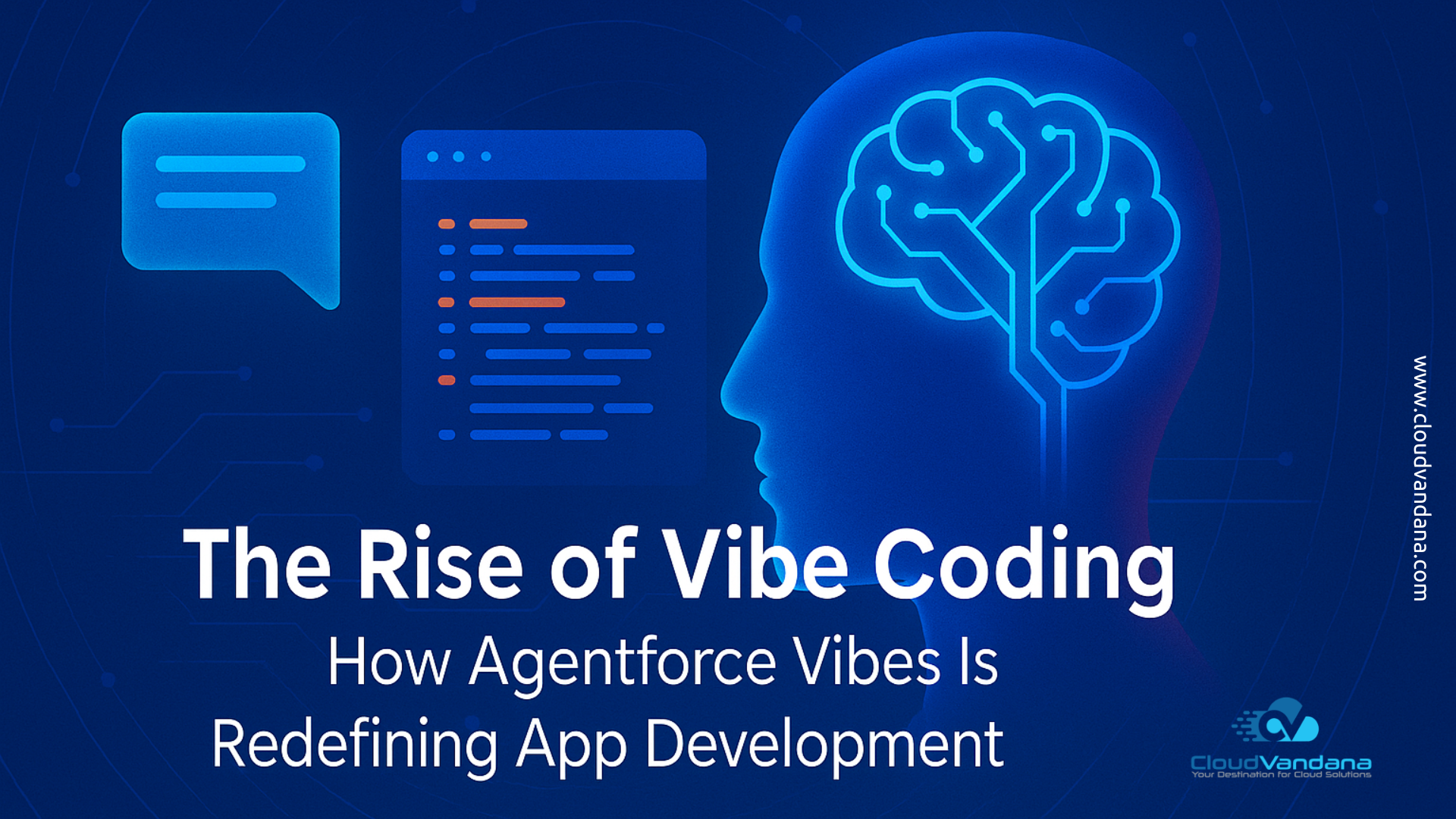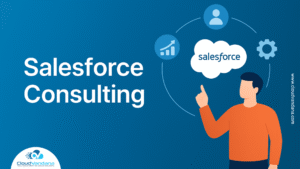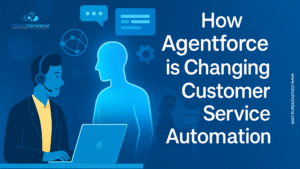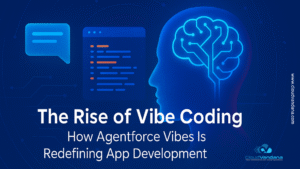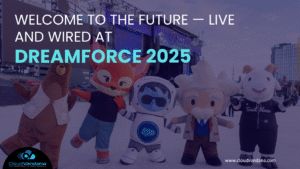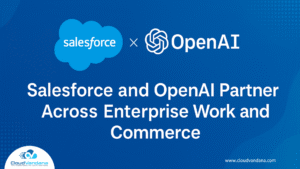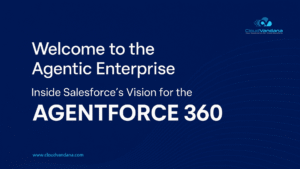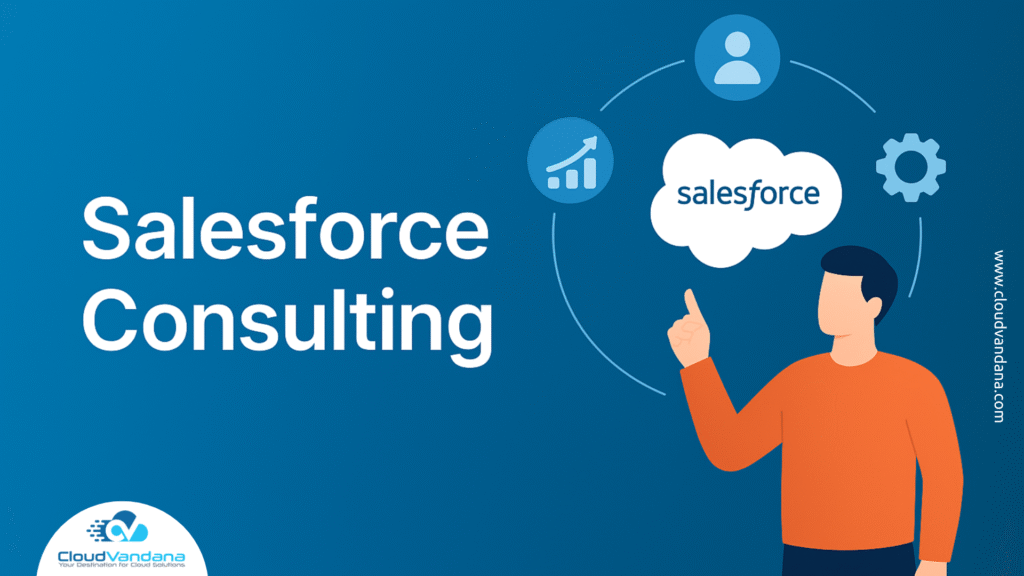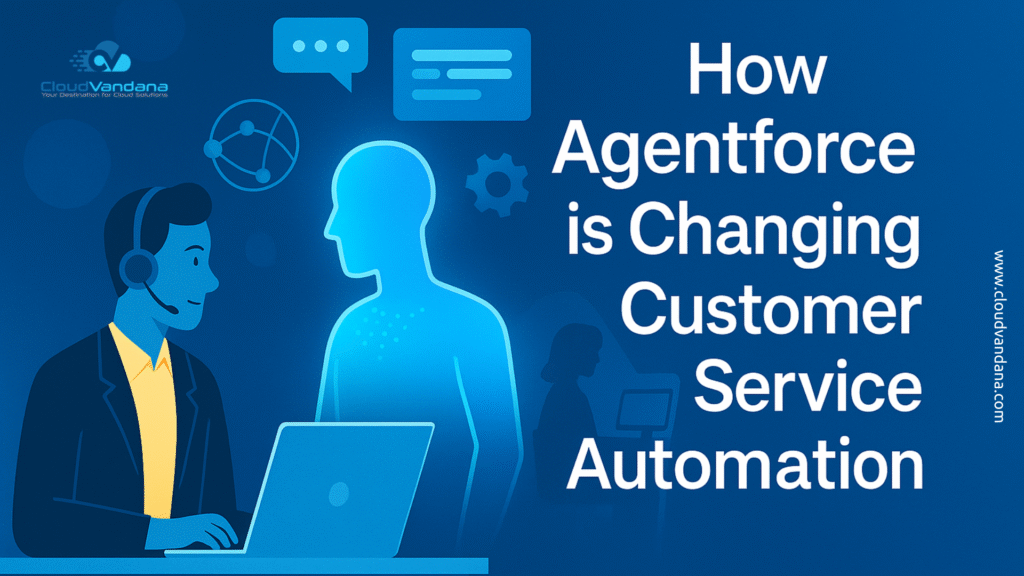The future of enterprise app development no longer starts with code — it starts with a conversation.
At Dreamforce 2025, Salesforce introduced a technology that feels less like programming and more like collaborating with an intelligent colleague.
It’s called Agentforce Vibes, and it brings to life a brand-new way to build software: Vibe Coding.
Imagine describing what you want an app to do — and watching it come to life within minutes. No syntax, no manual setup, no trial-and-error debugging.
Just natural language, context awareness, and intelligent creation.
That’s the promise of Vibe Coding — and it’s not a concept for the future. It’s here now.
Table of Contents
- 1. Keynote Spotlight: Humans & AI, Side by Side
- The Intelligence Behind Agentforce Vibes
- From Code to Conversation
- Making Development Fun Again
- Built for the Enterprise: Governance First
- Seeing It in Action: The Live Demo Moment
- What It Means for Salesforce Teams
- Preparing Your Organisation for Vibe Coding
- A Shift in the Developer’s Role
- From CRM to Creative Collaboration
- The Bottom Line: Development Has Never Been This Human
- YOU MIGHT ALSO LIKE
1. Keynote Spotlight: Humans & AI, Side by Side
A rallying cry for the “Agentic Enterprise”
A New Way to Build: What Is Vibe Coding?
When Patrick Stokes, Salesforce’s EVP of Product & Industries Marketing, took the stage to unveil Agentforce Vibes, the demo was less about technology and more about possibility.
He smiled as he described it:
“It’s the fastest, and frankly most fun way to build anything — just from a description.”
The idea behind Vibe Coding is beautifully simple.
You tell Salesforce, in plain English, what kind of app, automation, or process you want.
The AI agent interprets your words, understands your intent, and generates the structure, logic, and UI — instantly.
Vibe Coding is not a marketing phrase; it’s a new philosophy of creation.
Coined by AI researcher Andrej Karpathy earlier this year, the term captures the essence of working with AI instead of through it.
Rather than typing commands or dragging workflows, you guide an intelligent collaborator that already understands the language of your business.
This isn’t low-code. This is no-code, powered by context.
The Intelligence Behind Agentforce Vibes
So, how does it work?
Agentforce Vibes connects directly to your Salesforce org — meaning it has full awareness of your data model, fields, relationships, and metadata.
When you describe what you need, the AI leverages this context to design working applications automatically.
Say you tell it,
“Build a customer feedback tracker that notifies managers when satisfaction scores fall below 80.”
Within seconds, it will:
- Create new custom objects and relationships for Feedback and Customer Scores.
- Set up automation rules for thresholds and alerts.
- Design responsive layouts for desktop and mobile.
- Integrate dashboards for trend visualization.
- Generate underlying Apex logic — complete with test coverage.
You didn’t write a single line of code. Yet you just built a functional, enterprise-grade app.
The real power comes from Salesforce’s Data Cloud foundation.
Because the AI can access structured and unstructured data together, it doesn’t guess — it reasons.
It builds intelligently, using the exact semantics and processes that make your business unique.
From Code to Conversation
If we look at how app development has evolved, Vibe Coding is the natural next step.
For decades, developers wrote code manually. Then came low-code platforms, which replaced syntax with visual builders.
Now, Salesforce is taking the next leap: natural-language development — where code fades into conversation.
The difference is profound.
Instead of thinking in terms of functions or scripts, you think in terms of intent.
Instead of assembling technical components, you describe outcomes.
And instead of waiting weeks for IT to prototype an idea, business teams can test it the same day.
As Stokes emphasized during his demo, the key is context.
Agentforce Vibes doesn’t just translate words — it understands meaning.
When you say “onboard a new employee,” it knows you’re referring to HR data, permissions, tasks, and forms that already exist inside Salesforce.
It connects the dots automatically.
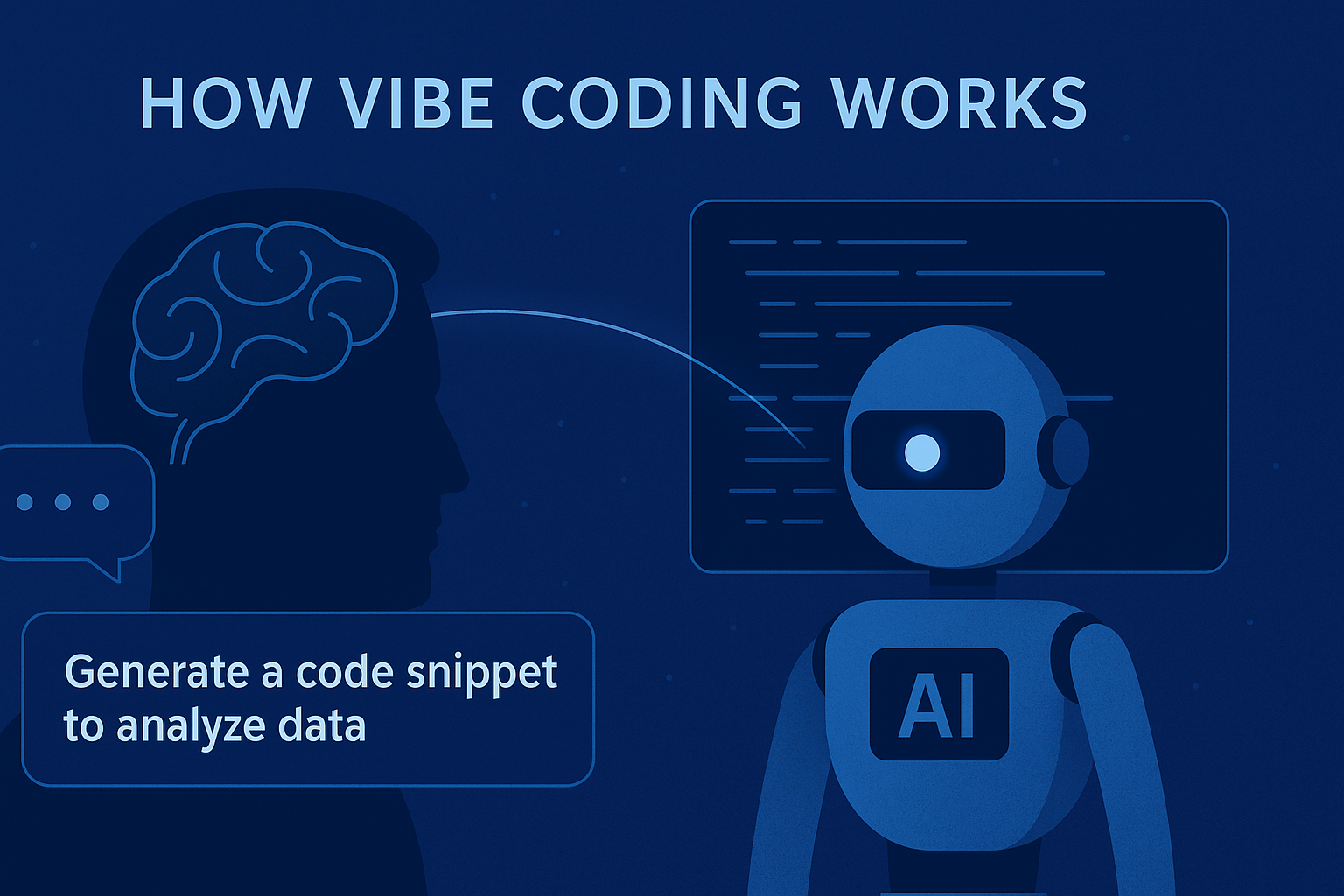
Making Development Fun Again
In a world of increasing technical complexity, “fun” is a word rarely associated with enterprise software.
Yet that’s exactly how Salesforce described Agentforce Vibes — and it fits.
Developers aren’t being replaced; they’re being liberated.
Instead of spending hours scaffolding objects or writing boilerplate logic, they can focus on architecture, performance, and innovation.
Admins and business users, meanwhile, gain the ability to build safely and confidently, without fear of breaking the system.
Marc Benioff, Salesforce’s Co-Chair and CEO, put it perfectly:
“The AI is elevating the developer. And the AI is elevating every aspect of the enterprise.”
That’s the essence of Vibe Coding.
It turns development from a technical chore into a creative experience.
Built for the Enterprise: Governance First
Speed is powerful, but governance is non-negotiable — especially in the enterprise world.
That’s why Salesforce designed Agentforce Vibes with security, compliance, and transparency built in.
Every generated change is logged.
Every deployment can be reviewed, tested, and rolled back if needed.
Administrators can define permission scopes for what the AI can create, ensuring sensitive data or processes remain protected.
For industries like finance, healthcare, and government, these safeguards mean one thing: innovation without compromise.
You can move faster and stay compliant.
Agentforce Vibes is also deeply integrated with Salesforce’s DevOps pipeline.
From sandbox creation to test automation and release management, the entire lifecycle is observable and auditable — giving enterprises the control they expect.
Seeing It in Action: The Live Demo Moment
One of the most talked-about moments at Dreamforce 2025 was the live demo of Agentforce Vibes.
A user simply typed:
“Create an internal service app that categorises customer emails, tracks sentiment, and escalates unhappy cases to management.”
Within minutes, the AI:
- Built a new object structure for Service Requests and Sentiment Scores.
- Generated page layouts, flows, and logic.
- Integrated with Slack for real-time alerts.
- Deployed the entire app to a sandbox with automated testing.
No IDE. No setup wizard. No manual deployment steps.
Just instant, working software.
The crowd’s reaction said it all — it felt like watching the future of enterprise development unfold in real time.
What It Means for Salesforce Teams
At CloudVandana, we see this shift as a defining moment for Salesforce professionals.
For years, our community has pushed the limits of what low-code could achieve.
Now, Vibe Coding takes us beyond that limit — to a place where ideas flow faster than code.
For admins, it means more autonomy.
For developers, it means more creativity.
For business leaders, it means faster results, lower costs, and fewer backlogs.
The development lifecycle will change:
- Teams describe goals instead of writing requirements documents.
- Agentforce Vibes builds prototypes instantly.
- Developers and architects refine the generated logic.
- Admins deploy, monitor, and iterate continuously.
The result? Continuous innovation with less friction than ever before.
Preparing Your Organisation for Vibe Coding
So how do you get ready for this new era?
The first step is data clarity.
Because Agentforce Vibes relies on your metadata and records for context, clean data is everything.
Well-structured objects, consistent field names, and accurate relationships make the AI far more effective.
Next, embrace experimentation.
Start small — a workflow, a dashboard, an internal service app.
Pilot Vibe Coding in sandbox environments and track time saved, user adoption, and accuracy.
These insights will help shape your broader AI strategy.
Finally, focus on skills and governance.
Upskill your team to think in terms of prompts and intent.
Set guidelines for reviewing and approving AI-generated assets.
Create a culture where AI is a partner — not a black box.
At CloudVandana, we’re already helping clients design these frameworks — aligning data governance, prompt engineering, and change management so they can innovate safely and effectively.
A Shift in the Developer’s Role
There’s a misconception that AI will replace developers.
The truth is the opposite: it will make developers indispensable in new ways.
Developers will evolve into system architects, validators, and curators of AI output.
They’ll focus less on syntax and more on outcomes — ensuring that what the AI builds is efficient, compliant, and aligned with business goals.
They’ll coach the AI, not compete with it.
It’s the same shift we saw when low-code arrived: instead of reducing the need for talent, it amplified it.
Vibe Coding will do the same — but on a larger scale.
From CRM to Creative Collaboration
Agentforce Vibes is more than a product launch; it’s part of Salesforce’s broader vision of the Agentic Enterprise — a world where humans and intelligent agents build, decide, and act together.
Just as AI once revolutionised customer support and analytics, it’s now transforming creation itself.
The line between idea and implementation is fading — and that’s where innovation accelerates.
For CloudVandana’s Salesforce clients, the opportunity is enormous.
The ability to build intelligent applications through natural conversation means shorter project cycles, better adoption, and more time for strategy.
This isn’t about replacing expertise.
It’s about giving your experts tools that multiply their impact.
The Bottom Line: Development Has Never Been This Human
When technology begins to feel human — intuitive, conversational, collaborative — it becomes more powerful.
Agentforce Vibes embodies that spirit.
It doesn’t just automate coding; it changes how people think about building altogether.
For years, we’ve measured progress in how fast we could code.
Now, progress will be measured in how clearly we can communicate intent.
That’s the magic of Vibe Coding: you bring the vision, and the AI brings it to life.
At CloudVandana, we believe this marks the beginning of a new chapter for Salesforce professionals — one where creativity, governance, and intelligence merge to redefine what enterprise software can be.
Ready to explore what Vibe Coding can do for your Salesforce organisation?
Let’s talk about how CloudVandana can help you adopt Agentforce Vibes and design smarter, faster, and more human-centric development processes.
👉 Connect with Our Salesforce Experts

Atul Gupta is CloudVandana’s founder and an 8X Salesforce Certified Professional who works with globally situated businesses to create Custom Salesforce Solutions.
Atul Gupta, a dynamic leader, directs CloudVandana’s Implementation Team, Analytics, and IT functions, ensuring seamless operations and innovative solutions.



